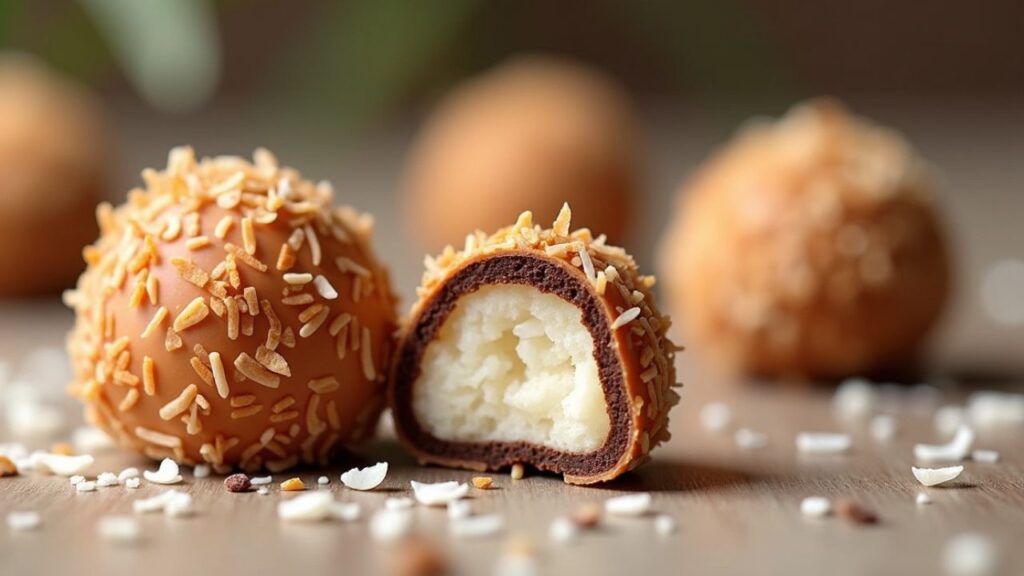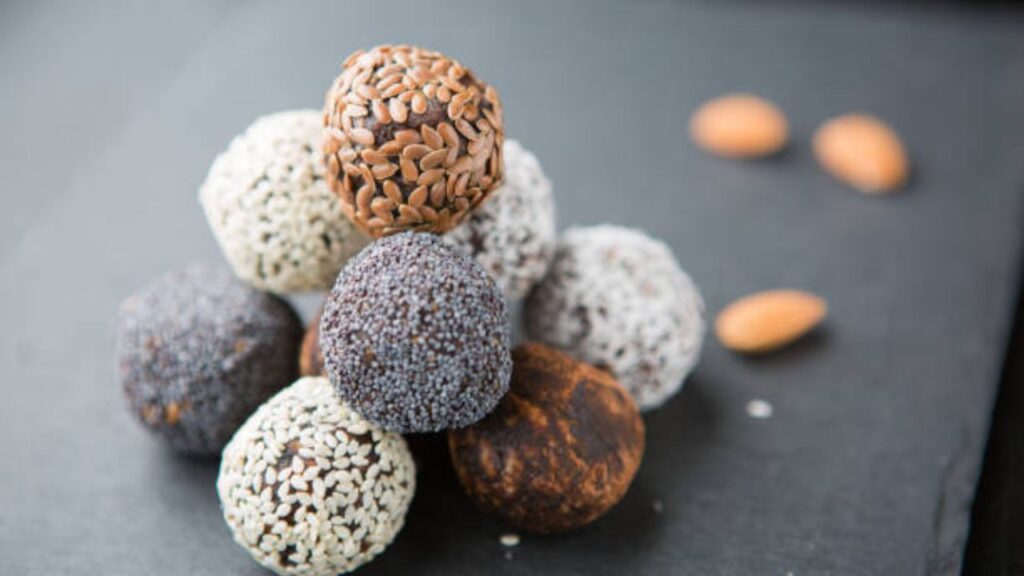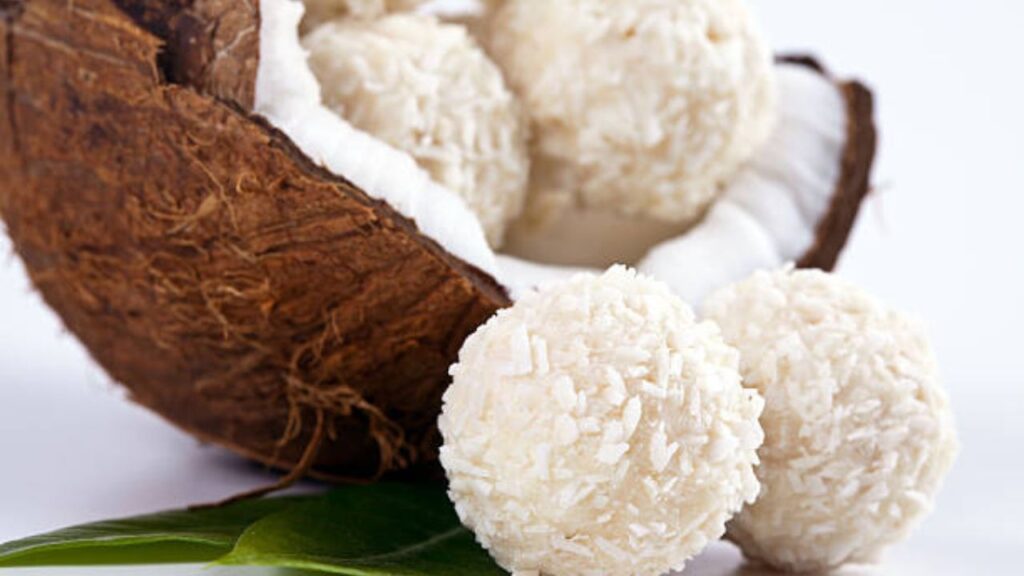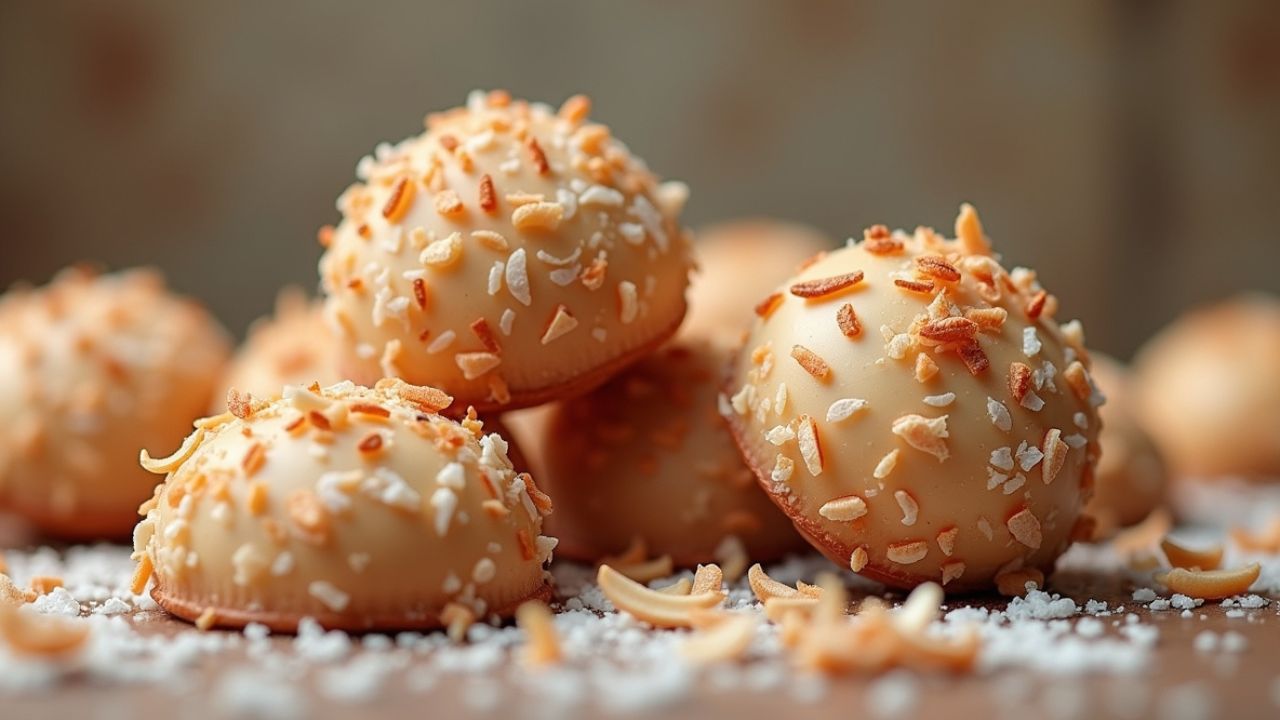Set aside your usual chocolate bars or gummy bears. Coconut mushroom candy is a strange, chewy delight with an interesting flavor that is sweeping the confectionery scene by silent storm. This might seem like an odd mix: earthy fungus meets tropical coconut? But believe us, this little jewel of taste is piquing interest and taste receptors everywhere. You have found the perfect place whether your taste is for something really unique, nostalgic for some, or just for a chewy bite. Let’s go deeply into the amazing realm of coconut mushroom candy, investigating what it is, why it’s unique, and all points in between.

What Exactly Is Coconut Mushroom Candy?
Don’t let the name mislead you; no real mushrooms are harmed in the creation of this famous sweet! The “mushroom” aspect just talks of its lovely and unique form. Imagine a little, spherical base—the mushroom cap— topped with a somewhat higher, cylindrical stem. Imagine now a whole lovely tiny construction created from crunchy, sweet, and beautifully scented coconut mushroom candy. Usually fruit-flavored like strawberry or pineapple, the base is a hard, jelly-like candy that has a vivid color and a sweet-tart basis. The beauty of coconut radiates from the stem, a softer, chewy core brimming with rich, sweetened coconut taste and texture. Taken together, they provide a whimsical two-toned delight that looks as much fun as it tastes. Every mouthful is a textural trip.
The Sweet Story: Origins of Coconut Mushroom Candy
Finding the exact birthplace of coconut mushroom sweets can be like traveling a mouthwatering, sugary road. Although conclusive evidence is scarce, this delightful dessert is particularly closely connected with Southeast Asian candy-making traditions, especially in Thailand, Vietnam, and the Philippines. Imagine busy neighborhood markets loaded with vibrant delights. It most certainly started decades ago as a clever and creative approach to make visually pleasing desserts utilizing easily obtained ingredients: sugar, gelatin or agar-agar for setting, flavorings, and, naturally, lots of coconut. The unusual mushroom form most likely resulted from a touch of whimsical candy form, a want to create something more intriguing than basic cubes or strips! From its local beginnings, immigration and global cuisine trends helped disseminate the passion for coconut mushroom candy, transforming it into a sought-after item in foreign aisles and specialized stores all around.
A Taste of the Tropics: The Unique Flavor Profile of Coconut Mushroom Candy
Eating coconut mushroom candy offers a wonderful two-part taste adventure. Your initial taste of the cap is a strong flash of fruity sweetness; popular hits are zesty orange, tropical pineapple, or tart strawberry. A good acidity from the citric acid balances this first sweetness and wakes your tongue. Then the flavor profile changes radically and wonderfully as you approach the stem. Coconut’s thick, creamy, clearly nutty sweetness steals the front stage. The textural difference enhances the experience: the stem gives a softer, almost melt-in-your-mouth coconut chew while the cap delivers a somewhat stiffer, jelly-like resistance. The brilliant fruit and the deep, soothing coconut provide an unexpectedly harmonic mix. Though the interaction of flavors and textures keeps it from being one-dimensional or cloying, it’s sweet, definitely. It really tastes like a chewy, fun slice of the tropics.
Finding Your Fungus Fun: Where to Buy Coconut Mushroom Candy
Part of the quest is searching for coconut mushroom sweets. Asian grocery stores—especially those specialized in Southeast Asian (Thai, Vietnamese, Filipino) goods—are the best places to start. Examine the candy aisles; they are often offered in tubs or transparent plastic bags. Large supermarkets sometimes have international cuisine departments as well, particularly in places with varied demographics. Your oyster is the digital world; big online sites including Amazon, eBay, and specialized Asian food stores—e.g., Yamibuy, Weee!–—offer a vast range of brands. You may also find them in candy subscription boxes emphasizing international delicacies or on worldwide markets. Check reviews and product photographs closely before purchasing online as brand quality, coconut content, and sugar levels can vary greatly. Among the well-known brands to search for are Lotte ( Koala’s March Mushroom Shape), Boy Bawang, or locally imported goods devoid of strong English recognition.

DIY Delight: How to Make Coconut Mushroom Candy at Home
Feeling clever? A great weekend project is creating handmade coconut mushroom candy! Although the method is simple, it calls for certain mushroom-shaped molds (usually bought online). For the caps, you will need sugar, light corn syrup or fructose syrup, water, without flavor gelatin (or agar-a powder), fruit flavoring/extract & food coloring, finely shredded unflavored coconut, coconut cream, additional sugar/syrup/gelatine, and maybe vanilla for the stems. Start by blooming the gelatin for every section. Create the cap mixture by heating syrup, sugar, water, adding bloomed gelatin, taste, and color. Pour into mold caps and let to set just a little. For the stems: stir coconut, sugar, syrup, water, heat, add vanilla, bloomed gelatin/agar. Spoon this heated coconut mixture onto the partly set caps. Let everything cool entirely until it becomes solid.
Carefully and gently sprinkle with cornstarch or powdered sugar. Made from scratch, homemade versions let you to employ natural colors and tastes and regulate sweetness, therefore producing a fresher, maybe more coconut-forward coconut mushroom candy experience. To get ideal texture, expect some trial and error.
Why the Buzz? The Rising Popularity of Coconut Mushroom Candy
Why are people loving coconut mushroom sweets more and more? There are a few delicious elements involved. First, food curiosity throughout the world is increasing. People want real world exotic flavors outside of popular sweets, and this candy presents a true taste of Southeast Asia. Second, its distinctive sensory experience is memorable: the cute form, two-tone appearance, and pleasant texture contrast between the fruish crown and chewy coconut stem. Unquestionably, the coconut craze itself is driven by its strong taste and its health halo, which increases the attraction of this sweet. Social media also plays a part; its pleasing, attractive form is ideal for sharing online and encourages discovery.
For many Asian populations living overseas, it’s also a favorite nostalgic pleasure and a delicious link to childhood or home. At last, its reach is growing from specialized ethnic businesses to more general internet and supermarket availability. Simply said, it’s a tasty, fun, and unique sort of sweet.
Sweet Symbolism: Cultural Significance of Coconut Mushroom Candy
Though largely a delicacy, coconut mushroom candy has subtle cultural value—especially considering its beginnings in Southeast Asia. Though whimsical in sweets, in some Asian countries the mushroom form may occasionally evoke ideas of riches or longevity as mushrooms are auspicious symbols. Additionally, the sweets reflect the imagination and delicacy of classic confectionery in abundance found in tropical fruits and coconuts. Usually available in candy boxes next to sweets, it is a mainstay of events such as Lunar New Year, family get–togethers in Thailand, Vietnam, and the Philippines. Finding coconut mushroom sweets in shops overseas is a great reminder of family traditions and childhood marketplaces for immigrants and their descendants, who find great feelings of nostalgia and connection to culture. Though it’s not particularly professional, it captures the enthusiasm, color, and social spirit of distributing simple, homemade-style treats throughout several countries.
Perfect Pairings: What to Enjoy With Coconut Mushroom Candy
Though coconut mushroom candy is delicious, combining it will improve your eating! Its sweet, tropical taste makes it a great mate for drinks. Try it with black tea (Earl Grey or English Breakfast; the tannins brilliantly cut through the sweetness).Cold beverages or a creamy latte helps counter the coconut undertones. For a more tropical mood, add coconut water, pineapple juice, or a light fruit smoothie. It also unexpectedly runs with light, dry white wines like the Riesling variety or Pinot Grigio. Food-wise, counter its sweets with something savory or salted. One finds a fantastic contrast from a handful of roasted, salted nuts (cashews, almonds).
Also good pairings for mild cheeses such as brie or cream cheese are One or two coconut mushroom candies that have a pleasant, cold end after a hot Southeast Asian dinner. Steer clear of very rich desserts next to it as the sweetness of the candy might become intolerable. Try to find your ideal partner!

Keeping it Fresh: Storage and Shelf Life of Coconut Mushroom Candy
Appropriate storage is essential to ensure your coconut mushroom candy tastes as best it could. Moisture and heat are the main hazards; they can make one sticky, lose their form, or produce off-texture development. Store them always in an airtight container at room temperature, away from heat sources like stoves or windows and direct sunlight. Perfect is a chilly, dark pantry. Many store-bought variations arrive in resealable bags; squeeze out extra air before closing. Adding a food-safe desiccant packet—like the silica gel packets commonly included—helps absorb moisture if your climate is highly humid. Unless absolutely required, avoid refrigeration as, when returned to room temperature, it can sometimes produce moisture within the packaging, rendering it mushy. Generally speaking, professionally manufactured coconut mushroom candy kept properly has a shelf life of six to twelve months (see the “best by” date).
Made at-home without preservatives should be eaten one to two weeks. It’s important to dump them if they start to smell strange, get too hard or sticky.
Coconut Mushroom Candy vs. Regular Sweets
| Feature | Coconut Mushroom Candy 🍄🥥 | Regular Gummies 🐻 | Standard Chocolates 🍫 |
| Shape & Look | Adorable mini-mushrooms (cap + stem)! Visually playful & instantly recognizable. | Simple shapes (bears, worms). Cute but common. | Bars, squares, or blocks. Functional, not “fun.” |
| Texture | Two-in-one experience: Slightly firm, fruity cap + soft, chewy coconut stem. Exciting bite! | Single, uniform chew (usually all gummy). Consistent but one-note. | Smooth melt or crunchy fillings. Rich, but predictable. |
| Flavor | Tropical twist: Zesty fruit (strawberry/pineapple) + rich, creamy coconut. Sweet + nutty harmony! | Single-note fruity or sour. Simple & crowd-pleasing. | Chocolate-forward (milk/dark) + fillings. Decadent but familiar. |
| Origin Story | Born in Southeast Asian kitchens (Thailand/Vietnam). A taste of tradition & nostalgia. | Mass-produced globally. Little cultural “soul.” | European/American heritage. Classic, but not exotic. |
| Experience | Feels like a tiny edible adventure – fun to eat, share, and discover! | Satisfying but forgettable. Everyday treat. | Comforting but not surprising. Reliable indulgence. |
Conclusion
Coconut mushroom candy is much more than simply a sweet morsel. This chewy combination of great fruitiness and creamy, tropical coconut is a wonderful junction of whimsical design, interesting texture, and engaging flavor. From its modest beginnings in Southeast Asian marketplaces to its increasing visibility on international shelves and internet retailers, this unusual confection presents a really distinct sweet sensation. It’s worth looking for whether your attraction is its cute form, flavor curiosity, nostalgic treat search, or just enjoy coconut. Store it correctly, keep in mind to enjoy it in moderation—the delight it is—and maybe even try creating your own! So the next time you see that package of small coconut-topped mushrooms, reach for it. Bite something, enjoy the interesting contrast, and find out why coconut mushroom candy has attracted a committed following. A little yet delightful adventure is waiting for you.
FAQ’s
1. Does this candy contain real mushrooms?
No such thing! The “mushroom” component is simply in terms of the adorable form. No fungus involved; it’s created from coconut, sugar, gelatin (or agar), and fruity tastes!
2. Is coconut mushroom candy vegetarian or vegan?
Usually not as it frequently includes animal-based gelatin. But check for companies that substitute agar-agar, derived from seaweed, instead; these are vegetarian! Review the components always.
3. Why is there powder on the candy?
Usually made from cornstalk or tapioca starch, the fine coating prevents the sweets from adhering together in the bag. It is absolutely edible and safe.
4. Why does the coconut part taste different from fresh coconut?
Compared to the newly coconut water or flesh, the stem employs sweetened with sugar, cooked coconut that is shredded or coconut cream for giving it a richer, sweeter, and more concentrated “candy” taste.
5. Where can I buy coconut mushroom candy?
Your best choices are online (Amazon, Yamibuy, Weee!) or Asian grocery stores—particularly Thai, Vietnamese, Filipino sections. Also check overseas aisles at large supermarkets.
